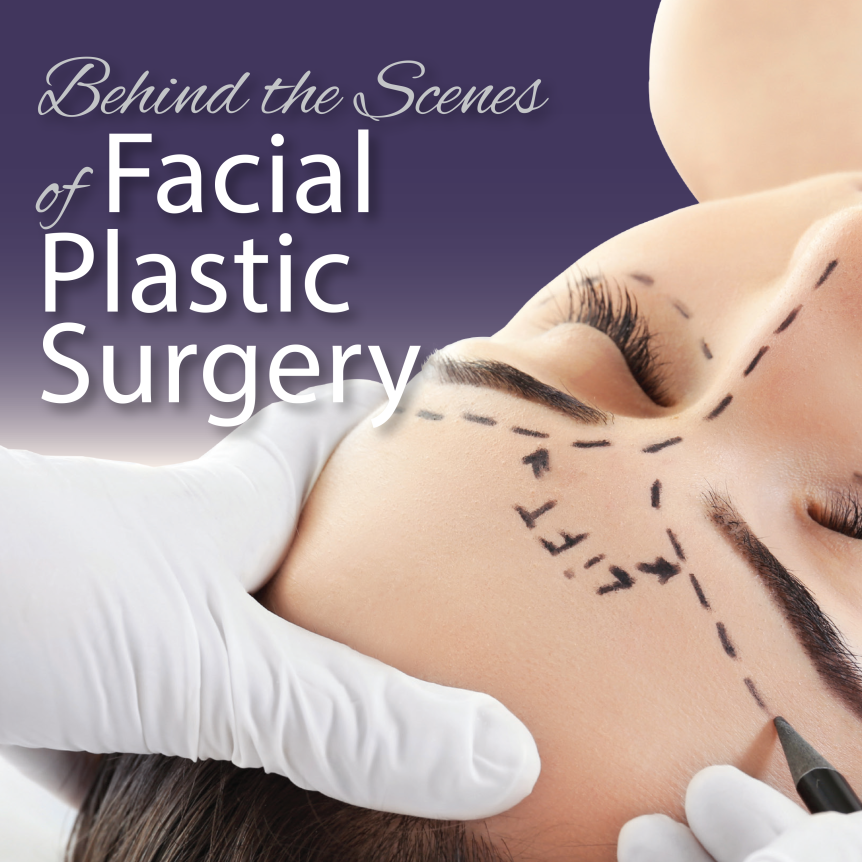The public often envisions facial plastic surgery as esthetic surgery, the correction of minor defects and the repair of the manifestations of the ravages of aging.
The reality is that facial aesthetics and reconstructive surgery are inseparable.
Balancing the needs of functional and aesthetic facial reconstruction requires a unique blending of art, science and innovation. Facial plastic surgeons have the unique privilege to take care of such an intimate part of people’s bodies- their faces. We are surgeons of the face that are concerned with deformities and defects on the skin and the underlying musculoskeletal framework.
Our profession is an art form. Facial plastic surgery is a science, supported by the fundamentals of physiology, physics and wound healing. We can describe it as “architectural medicine” because a pleasing appearance is created from the foundation outward. Unless attention is paid to the foundation (bone structure, muscles, and fat) as well as to the exterior (the skin), over time the foundation shifts and collapses. And, unless the foundation is supported by long-lasting materials, the structure is destined to become undone sooner than expected.
Tagliacocci, an XVI-century Italian plastic surgery pioneer wrote: “We reconstruct and complete parts which nature had given but which were destroyed by fate, and we do so not so much for the enjoyment of the eye as for psychic comfort to the afflicted.” Malformations, cutaneous defects and bony or soft-tissue changes caused by trauma or neoplasms (abnormal tissue growth) can drastically alter a patient’s appearance, impacting their self-confidence. Patients are moved to seek corrective surgery for signs of aging by a desire for self-improvement or a desire to preserve a youthful appearance.
There are numerous myths about having a procedure done on the face for improvement like: “People who have plastic surgery have complicated feelings about it”. Facial plastic surgeons agree when they say “No, they do not – not usually.” Those who have not had plastic surgery hyper analyze the motivations of those who have. For most of our patients, it is a simple decision. They want to fix something that bothers them. Period. No Freudian analysis, no overthinking.
Facial plastic surgeons operate on patients of all ages with procedural diversity ranging from non-surgical treatments such as laser resurfacing and injectable fillers to reconstruction after oncologic procedures. With safer and minimally invasive procedures, facial plastic surgery has evolved into a natural extension of today’s pursuit of a healthy lifestyle. A good rule for patients to live by is “surgery corrects sagging and/or bulging facial tissues, skin resurfacing smooths wrinkles.” A well-conceived facial rejuvenation plan must incorporate these and other fundamental principles of engineering, architecture, design and prudence.
Facial Plastic and Reconstructive Surgeons have extensive training specialized in the face. This surgical craft is best developed over time and seasoned with experience. This experience starts early on in otolaryngology – head and neck surgery training, as it has become an integral part of the otolaryngology residency experience. After the residency, there are facial plastic and reconstructive surgery fellowships, a highly competitive fellowship that affords the surgeon the opportunity of a one-year, focused experience in the evaluation and medical and surgical management of aesthetic and reconstructive issues of the face. These fellowship programs are widely respected by the medical community and represent the finest postgraduate programs in the world for the training of facial plastic and reconstructive surgeons.
We focus on beauty and restoration that are natural and complimentary to the diverse population of patients being treated. Surgical implants, skin repositioning and feature balancing remain integral to the paradigm with thoughtful use of cosmetic injection. Facial plastic surgery requires unparalleled precision and attention to detail. The thought process required in the planning of facial procedures may even supersede the technical skill involved. Beauty is our business. Natural beauty should be the goal.
Facial cosmetic procedures are more popular today than ever. The rigorous training of the facial plastic surgeon provides an unrivaled understanding of the anatomy and aesthetics of the face. We are trained to perform safely the following procedures:
Facial rejuvenation (facelifts, brow lifts, and eyelid surgery)
Rhinoplasty
Skin rejuvenation (Botox, fillers, implants)
Skin resurfacing techniques (laser and peels)
Treatment of facial skin disorders (photoaging, pigmentation, scars, acne, keloids).
Facial reanimation for patients suffering from facial nerve paralysis.
Reconstructive facial surgery for skin cancer, trauma, and congenital facial malformations.
Rodrigo Martinez Monedero, MD, PhD
Assistant Professor of Otolaryngology – Head & Neck Surgery
Facial Plastic & Reconstructive Surgery Division
LSU Health Shreveport

